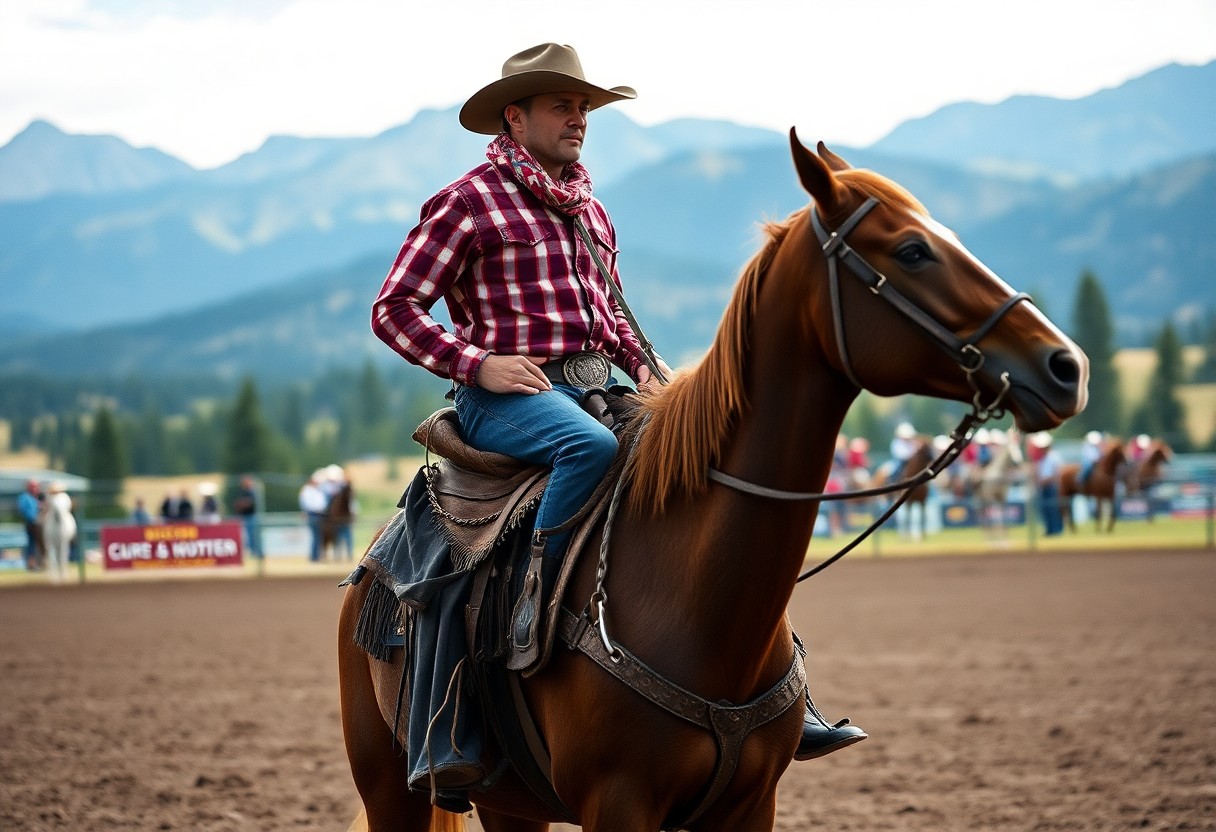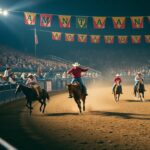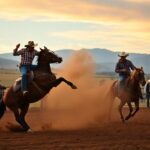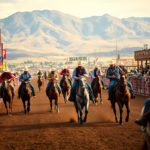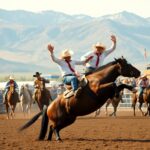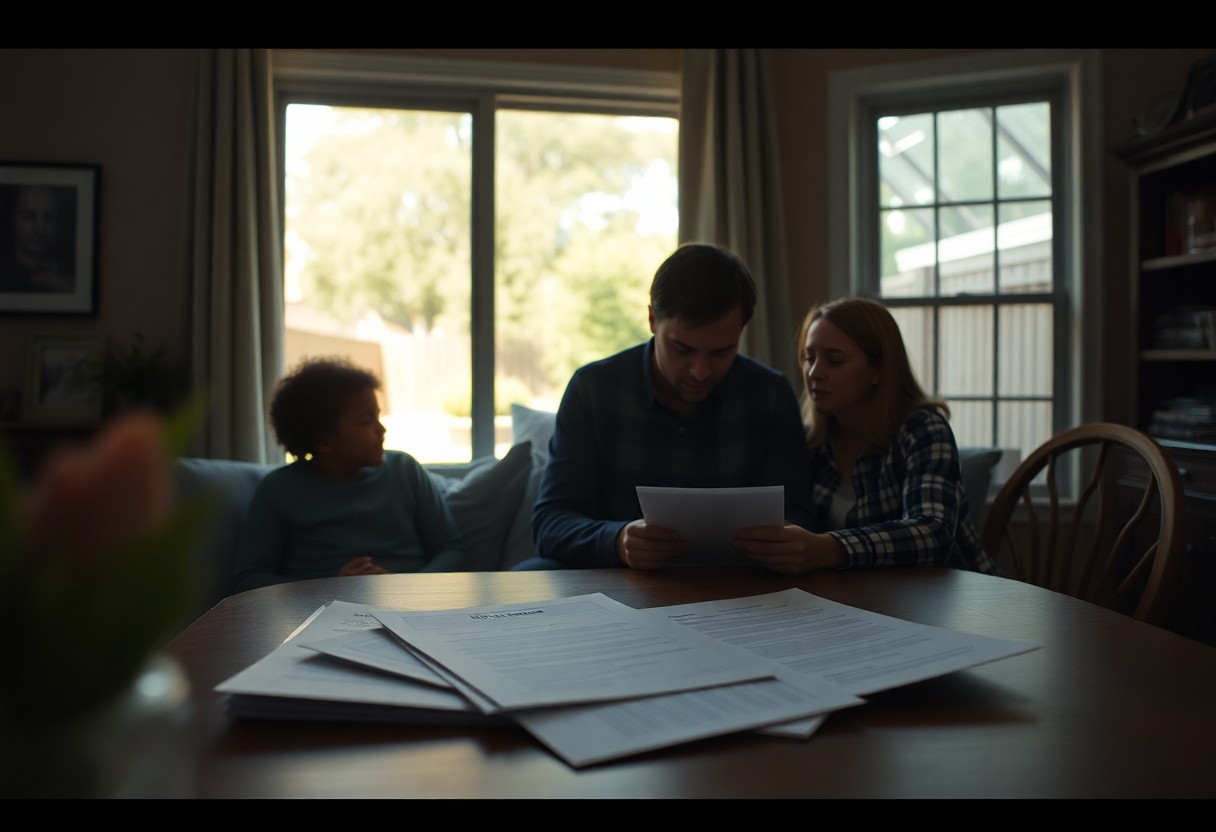How Does Montana's Equestrian Heritage Shape Its Rodeo Legacy?
Many aspects of Montana’s rich cultural fabric interweave, particularly its equestrian heritage and the vibrant rodeo legacy that defines the state. Understanding how these two elements influence each other not only enhances your appreciation for Montana’s western traditions but also highlights the skills, values, and community spirit inherent in rodeo culture. Dive into the world where skilled horsemen and women harness their historical ties to create a thrilling, competitive environment, while simultaneously preserving the lifelong traditions that connect generations of Montanans.
The Historical Roots of Equestrian Culture in Montana
A profound tapestry of history underpins the equestrian culture in Montana, revealing how the connection between the land, its people, and horses has shaped the state’s identity. At the heart of this legacy are the Indigenous peoples of Montana, who have long recognized the horse’s significance to their daily lives, culture, and survival. The introduction of horses revolutionized Indigenous communities, enhancing mobility, trade, and hunting practices. You can trace the profound relationship these groups had with their equine companions, showcasing a deep-seated understanding of animal husbandry that influenced their way of life for generations. This foundation laid by Indigenous influences helps underscore the reverence and respect that continues to characterize equestrian traditions in Montana today.
Indigenous Influences
Across the vast plains and rugged mountains of Montana, you can see the lasting impact of Indigenous people on the state’s equestrian heritage. The introduction of the horse by Spanish explorers in the 16th century was swiftly embraced by tribes such as the Lakota, Crow, and Nez Perce, transforming their socio-economic structures. The horse became a symbol of wealth, power, and freedom, reflecting the tribes’ unique identities and cultural practices. These early equestrian skills, honed over years of practice, would go on to inform the foundational principles of rodeos and equestrian events that you see today, showcasing the resilience and adaptability of Indigenous culture.
The Arrival of European Settlers
One of the major turning points for Montana’s equestrian culture came with the arrival of European settlers in the 19th century. As pioneers journeyed westward, they brought with them their own equestrian traditions, which merged with the Indigenous practices already established in the region. This fusion of cultures led to the emergence of distinctive ranching practices and competition, as settlers relied on horses for farming, herding cattle, and traversing the challenging landscapes of Montana. You should note how the settlers established rodeos, drawing inspiration from both their European backgrounds and Indigenous heritage, thus enriching the state’s equestrian traditions.
European settlers not only introduced new breeds of horses into the region but also brought with them their own methods of riding and working with livestock. The convergence of these equestrian traditions created a rich fabric of competition and collaboration among ranchers, laying the groundwork for the rodeos that would later flourish in Montana. This melding of cultures not only strengthened community bonds but also established a profound respect for the skills of horse handling, which remains a vital part of Montana’s identity. With fairs and competitions emerging across the state, the rodeo became a celebration of this shared heritage, showcasing the deep-rooted connection between man and horse that you continue to observe in Montana’s equestrian events today.
The Development of Rodeo in Montana
Some might be surprised to learn that Montana’s rodeo legacy has deep roots in the state’s agricultural history, where ranching and horseback riding skills were crucial for everyday life. As cattle drives became a common practice in the late 19th century, the need for skilled horsemen led to informal competitions. In these early gatherings, ranch hands would showcase their prowess in roping, riding, and other crucial skills, ultimately laying the groundwork for more structured rodeo events. Notable figures like Montie Montana played a significant role in promoting rodeo culture and shaped its recognition beyond state lines, establishing rodeo as an integral part of Montana’s identity.
Early Rodeo Events and Competitions
On the heels of those informal gatherings, the late 1800s and early 1900s saw the rise of organized rodeo events in Montana. These competitions combined various traditional ranch tasks into thrilling showcases of skill and bravery, attracting large crowds. You might find events such as bronc riding, steer wrestling, and barrel racing being the highlight of town gatherings, with participants often coming from neighboring states to compete. These early rodeos not only reflected the practical ranching skills of the time but also fostered a sense of community and camaraderie among cowboys and cowgirls.
The Evolution of Rodeo Techniques
Against this backdrop, rodeo techniques began to evolve rapidly, reflecting the changing dynamics of both ranching practices and competitive sports. Advances in equipment and a better understanding of animal behavior led to safer yet more challenging events. You may notice how today’s competitors utilize specialized saddles, protective gear, and enhanced training methods, allowing for greater performance while minimizing risks to both riders and animals. As the sport progressed, it not only maintained its core values but also embraced innovation, drawing in new participants and audiences alike.
Events like bull riding and calf roping have grown in popular demand, with competitors often pushed to their limits in pursuit of excellence. The exhilaration of the ride, combined with the sheer strength and finesse required, showcases the admirable balance of skill and courage. While these events can be inherently dangerous, the safety measures in place today have significantly improved the overall experience, allowing both participants and spectators to enjoy the thrill of rodeo.
The Role of Ranching in Shaping Equestrian Skills
Assuming you take a closer look at Montana’s ranching landscape, you’ll quickly realize that it serves as a bedrock for the equestrian skills that fuel its vibrant rodeo culture. The ranching lifestyle demands a unique set of skills, from horsemanship to cattle handling, all of which are intricately intertwined with the art and spirit of rodeo. As you familiarize yourself with ranching practices, you can appreciate how they impart not only physical abilities but also a deep-seated respect for the animals and the land. This connection fosters a strong sense of responsibility, allowing ranchers and athletes alike to honor the partnerships they create with their equine companions.
Ranching Practices and Their Impact on Rodeo
For those engaged in ranching, day-to-day operations immediately impart necessary rodeo skills. Working with horses on the wide-open plains, you learn to navigate various terrains, manage livestock, and handle unpredictable situations. These experiences contribute to developing quick reflexes, keen observation skills, and a profound understanding of animal behaviors, all of which are pivotal when you step into the rodeo arena. The ability to adapt to various circumstances is particularly advantageous, allowing you to maintain composure under the pressures of competition.
Training and Skill Development for Competitors
Across the ranching community, there exists a distinct emphasis on training and skill development for emerging rodeo competitors. You might engage in diverse activities that range from roping practice to timed barrel racing, each contributing to your overall skill set. Mentorship within this community enables you to absorb invaluable knowledge, where seasoned ranchers pass on techniques and tips that have shaped their own thorough understanding of both ranching and rodeo.
To excel in rodeo, embracing an extensive training regimen is beneficial, often involving hands-on experiences that replicate real-life ranching scenarios. This approach allows you to build muscle memory and confidence, necessary attributes for navigating rodeo events like bronc riding or steer wrestling. Safety remains paramount, as you equip yourself with skills not only to perform competitively but also to care for both your horse and yourself, ensuring an enriching experience that resonates deeply within Montana’s equestrian heritage. The interplay of training and the ranching background you cultivate becomes a solid foundation, allowing you to evolve as a competitor in the rodeo arena.
Montana’s Iconic Rodeo Events
Not only does Montana boast a rich equestrian heritage, but it is also home to some of the most iconic rodeo events in the United States. These events epitomize the spirit of the American West, drawing visitors and participants alike into the vibrant culture of rodeo. The state’s unique combination of topography, tradition, and community involvement creates an unforgettable experience for both competitors and spectators. Each rodeo in Montana tells a story, connecting you to the land, the people, and the gallant history of the region.
The Annual Great Northern Rodeo
An crucial part of Montana’s rodeo landscape is the Annual Great Northern Rodeo, held each year in Great Falls. This celebrated event features thrilling competitions, showcasing everything from bull riding to barrel racing. You can witness skilled cowboys and cowgirls compete for prestige and prizes, while also experiencing the genuine camaraderie that defines rodeo culture in Montana. The atmosphere is electric, as local talent showcases their skills and champions emerge amidst cheers and applause.
The Billings Rodeo
Rodeo fans also flock to the Billings Rodeo, renowned for its long-standing tradition and commitment to honoring the rodeo lifestyle. It serves as a hub for both amateur and professional riders, providing an exhilarating platform for competition. You’ll find a wide range of events that emphasize strength, skill, and partnership between horse and rider, all of which highlight Montana’s deep-seated love for rodeo.
This spectacular event features a series of competitions including steer wrestling and team roping, which test the mettle of even the most seasoned participants. With its welcoming atmosphere and a wide variety of events that cater to all ages, the Billings Rodeo not only promotes competition and sportsmanship but also serves as a celebration of community. As you enjoy the thrilling rides and impressive displays of talent, you become part of a storied tradition that has shaped Montana’s rodeo legacy for generations.
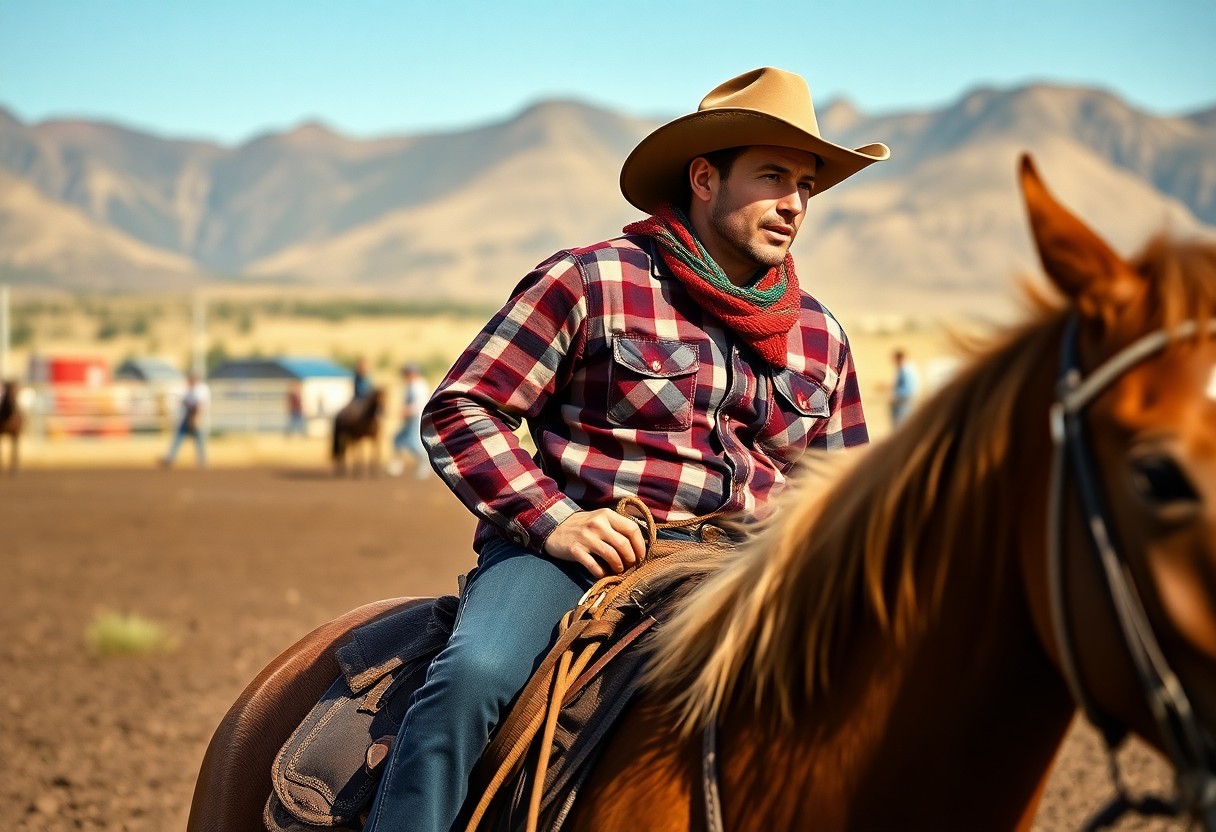
Cultural Significance of Rodeo in Montana Communities
To understand the cultural significance of rodeo in Montana communities, one must recognize that these events go beyond mere entertainment; they serve as a living narrative of your local history and values. Rodeo isn’t just a sport; it encapsulates the spirit of the rugged frontier lifestyle that has shaped the state. You will find that, during rodeo season, towns come alive with excitement, as locals gather to celebrate age-old traditions, share stories, and, importantly, strengthen their bonds. The roar of the crowd, the adrenaline of the competitors, and the warmth of the community create an atmosphere that reflects the heart of Montana.
Rodeo as a Form of Cultural Expression
Montana’s rodeo events showcase the unique cultural tapestry woven from the ranching heritage and indigenous influences in the region. Montana rodeos are rich in local color and cultural expression; you may witness everything from traditional Native American dances to cowboys demonstrating their horsemanship skills. In this way, rodeo becomes a canvas for expressing your culture, honoring those who have come before, and passing down stories to future generations. You will likely find that each rodeo has its unique flair, drawing on the influences of the surrounding area, providing a vibrant display of community pride.
The Role of Rodeo in Building Community Identity
Along with fostering excitement, rodeos play a critical role in building community identity. They offer people a chance to come together, fostering a sense of belonging that is vital in the vast expanses of Montana. Rodeos often serve as a unifying force that transcends individual differences, connecting you with people from various walks of life. As you watch friends and neighbors compete or applaud local youth entering their first events, you recognize that rodeo is about more than just competition; it’s about pride in where you live and a connection to the land that sustains you.
And for many of you, the annual rodeo isn’t just a highlight of the summer; it symbolizes a deep-rooted connection to Montana’s rich heritage. You may find that rodeo events, such as aiming for the highest bucking bronco or showcasing the fastest calf roping, represent not just an athletic challenge but also a celebration of resilience and skill that characterize the community. It’s a time to reflect on shared values, forge new friendships, and honor the traditions that connect generations.
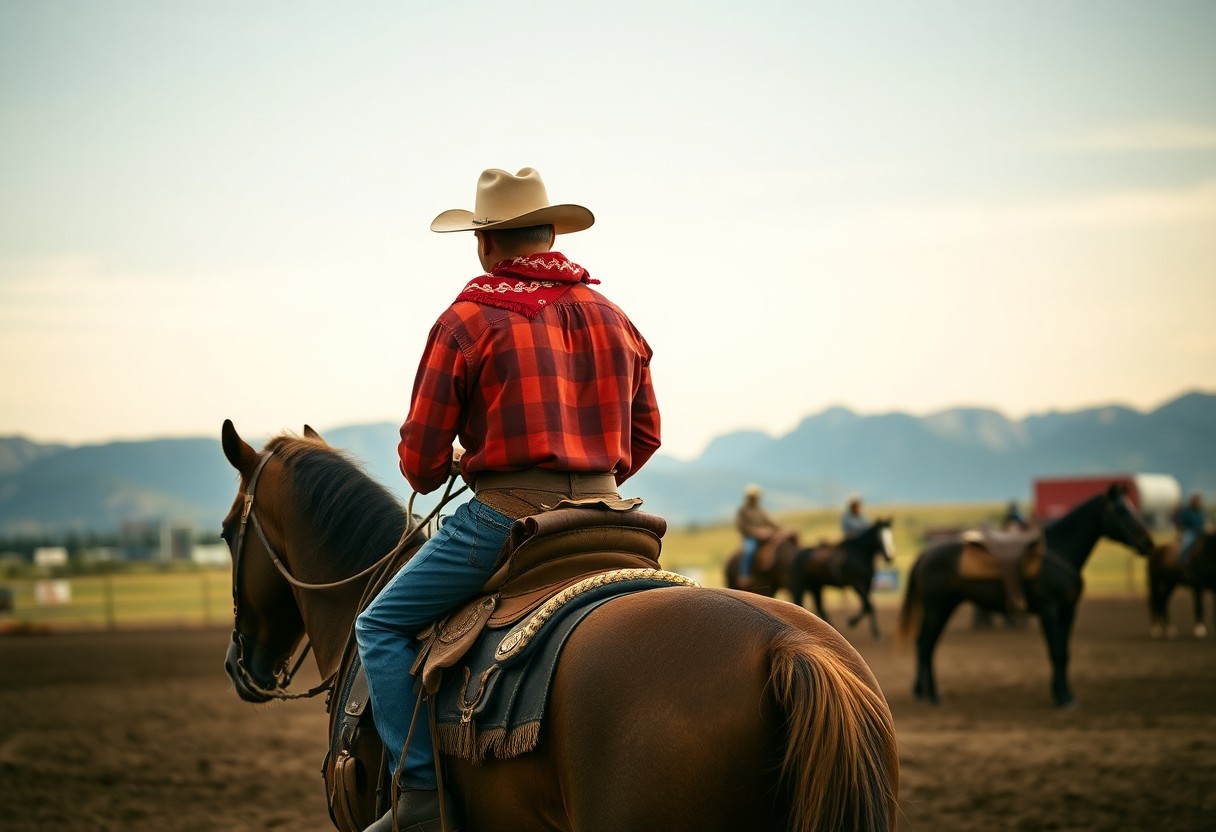
Modern Equestrian Practices and Rodeo
Your understanding of modern equestrian practices is crucial if you want to appreciate how these traditions influence rodeo events today. Contemporary techniques in equestrian sports draw heavily from the rich heritage of riding, training, and horse care that has been passed down through generations. As competitive rodeo continues to evolve, you’ll notice that events emphasize not only the skill of the riders but also the welfare of the horses. Riders now incorporate advanced training methodologies and performance metrics, pushing both horse and rider to new heights, while traditional values are maintained, ensuring a balance between competition and animal welfare.
Contemporary Techniques and Competitions
Around Montana, equestrian competitions are a blend of classic skills and modern innovations. Local rodeos often showcase events such as bull riding, barrel racing, and team roping, where you’ll see riders employ cutting-edge techniques that focus on precision and agility. There are also community workshops where aspiring competitors can learn from seasoned professionals, adapting techniques that respect the animal’s strength and endurance while honing their competitive edge. Consequently, this synergistic approach reinforces the bonds between horse and rider, promoting both skill development and a deeper understanding of the animals you ride with.
The Impact of Technology on Equestrian Sports
Among the most significant changes in modern equestrian sports is the incorporation of technology, which has transformed how you engage with your horse and the sport itself. Digital tools now play a pivotal role in training, with innovations such as video analysis, wearable fitness trackers, and online coaching platforms that help you refine your skills. These advancements allow you to monitor your horse’s performance metrics and well-being, ensuring that training is not only effective but that it prioritizes the animal’s health and safety throughout the process. This technology-driven evolution has redefined your approach to both competition and practice, enhancing your capabilities while maintaining a commitment to the heritage that started it all.
For instance, the use of video analysis software provides you with real-time feedback on your riding technique and those of your competitors. This technology allows for a detailed breakdown of your performance, highlighting areas in need of improvement, which is especially valuable in a competitive environment. Additionally, advancements like wearable tech for horses can track vital signs and performance metrics, ensuring that your equine partner is in optimal shape for competition. Overall, these innovations lead to safer practices and enhance the integrity of the sport, providing a more fulfilling experience for both you and your horse.
Conclusion
As a reminder, Montana’s rich equestrian heritage significantly influences its rodeo culture, creating a unique legacy that embodies both tradition and innovation. You can see this heritage reflected in the skilled horsemanship that riders exhibit, the values of community and teamwork that underpin events, and the passionate dedication to preserving Montana’s cowboy history. Engaging with this legacy allows you to appreciate not only the spectacle of rodeo but also the deep-rooted stories and practices that shape it.
Your experience in Montana’s rodeo scene will undoubtedly provide you with a greater understanding of how equestrian life intertwines with the spirit of the West. By recognizing the significance of this heritage, you embrace the essence of rodeo, fostering a deeper connection with the land, its people, and their craft. This understanding will enrich your perspective, ultimately enhancing your participation in a vibrant and storied cultural tradition.
FAQ
Q: What is the historical significance of horses in Montana’s equestrian culture?
A: Horses have been integral to Montana’s culture since the days of the Native American tribes, who relied on them for transportation, hunting, and trade. As settlers arrived in the mid-19th century, horses became necessary for ranching and farming. This longstanding relationship with horses laid the foundation for the state’s rodeo traditions, showcasing skills that were necessary for daily life in a ranching environment. The equestrian heritage helps to inform the stylistic elements of rodeo events, emphasizing the importance of skill, teamwork, and respect for the horse.
Q: How do local rodeo events reflect Montana’s equestrian heritage?
A: Local rodeo events in Montana showcase a variety of competitions that draw directly from the state’s rich equestrian heritage. Events such as bronc riding, barrel racing, and team roping are not only thrilling to watch but also serve as a testament to the practical skills that Montana’s cowboys and ranchers honed throughout history. These competitions often feature traditional music, attire, and community festivities that enhance the cultural experience, reinforcing the bonds between riders, horses, and the agrarian lifestyle that characterizes much of Montana.
Q: In what ways does Montana’s rodeo culture promote community and tradition?
A: Montana’s rodeo culture plays a significant role in bringing communities together. Rodeos often serve as annual gatherings, where families and friends come to support local competitors and celebrate their shared heritage. These events foster a sense of pride in local traditions, including horsemanship, ranching skills, and stories passed down through generations. Additionally, rodeos provide opportunities for youth involvement, ensuring that the equestrian legacy is carried forward while teaching respect for animals and the importance of hard work and perseverance.
![]()
